/https://storage.googleapis.com/s3-autonomous-upgrade-3/static/upload/images/new_post/5-basic-ergonomic-design-tips-2989-1633517968290.jpg)
5 Basic Ergonomic Design Tips for Your Workstation
Your workplace should be comfortable enough for you to sit hours at a time and work attentively on those projects. If something is constantly poking you or hurting at the back, you will not get the desired efficiency now, will you? Office ergonomics is all about the study of making a workplace comfortable for the user.
It also makes sure you don't tire yourself beyond measure; hence the ergonomic design tip must be an integral part of office design ideas. For example, before you set up an office chair and buy a standing desk, it is important to take the right ergonomic design approaches. The importance of ergonomic tips will help you achieve efficiency and productivity in the workplace, and soon you will observe better energy levels.
This article will cover some of the best ergonomic design guidelines to make your home office setup the right place for you and your health.
Support Multiple Postures
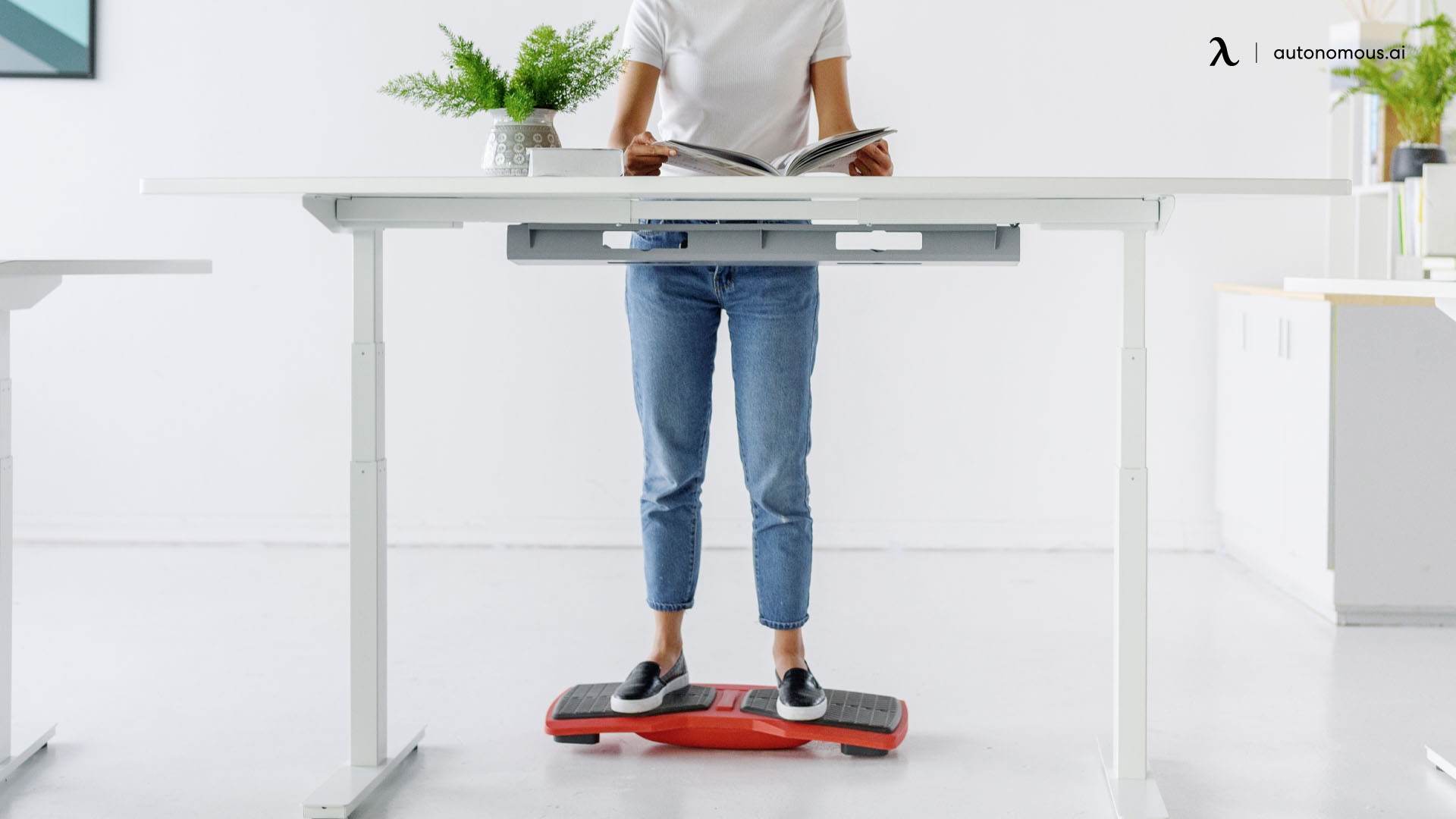
The first ergonomic design tip is ensuring flexibility in postures. Your posture while working defines the part of your body under stress. The right posture can make your body feel comfortable, and a slight mistake in your posture can lead to long-term health issues like back pain and physical aches. This means you need to focus on your posture to find the most relaxed and comfortable work position. This will substantially reduce the chances of being subjected to chronic injuries or other body issues.
Even though it may seem hard to achieve the right posture for you, especially when you are early on in this practice, here are some common tips you can practice to ensure you achieve the nearest to perfect posture.
Make sure you have comfortable proximity to your desk. Sit close enough, so your arms and shoulders don't slouch, as well as don't shrug.
The second step in this ergonomic design tip is to ensure your neck, shoulders, and head are in a relaxed state with no stress in them.
- Ensure the hips are touching the bottom back of your chair and peacefully rested, so there is no curve in the spine.
- Create a 90-degree angle with your elbows
- Keep your arms and forearms parallel to the floor and make sure they are straight.
- Another common mistake with working while sitting on your feet is dangling. Make sure your feet are resting on the floor with no tension or stress in them. The legs should be bent at a safe 90 degrees angle.
- Make sure to learn about ergonomic positions and standing desk tips before using a piece of furniture.
Switch the Positions
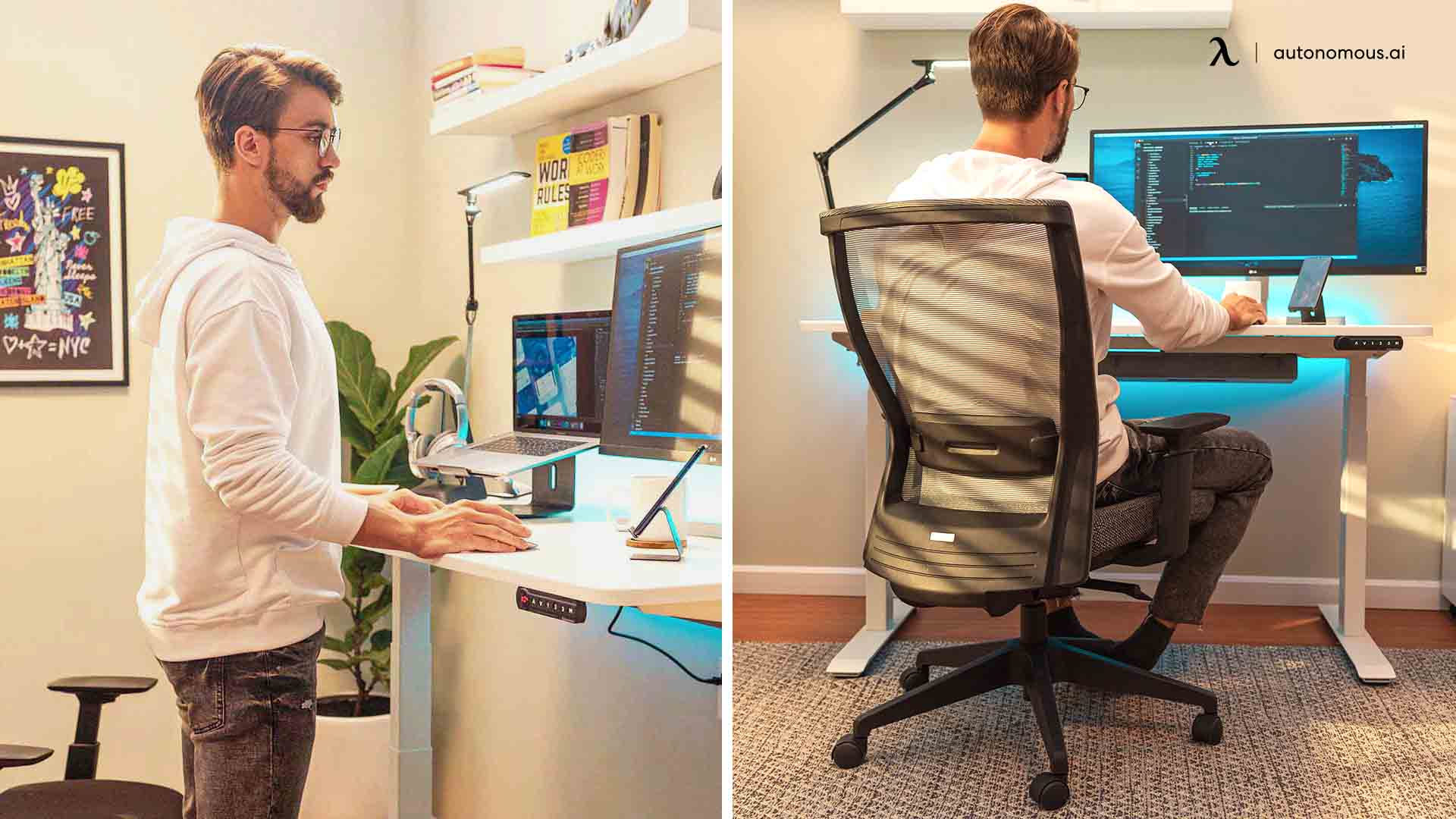
One of the most important aspects of understanding workplace ergonomics is to keep moving. For an ideal work time and enough comfort level for the body, you need to switch the postures while working. This is why adjustable standing desks are a common recommendation by researchers who recommended switching between sit and stand positions various times a day. Moreover, make a habit of getting up from your workstation after every hour or so. Take a few minute walks, and you can even practice some desk stretch or yoga poses to get rid of the buildup stress periodically.
Healthy Postures
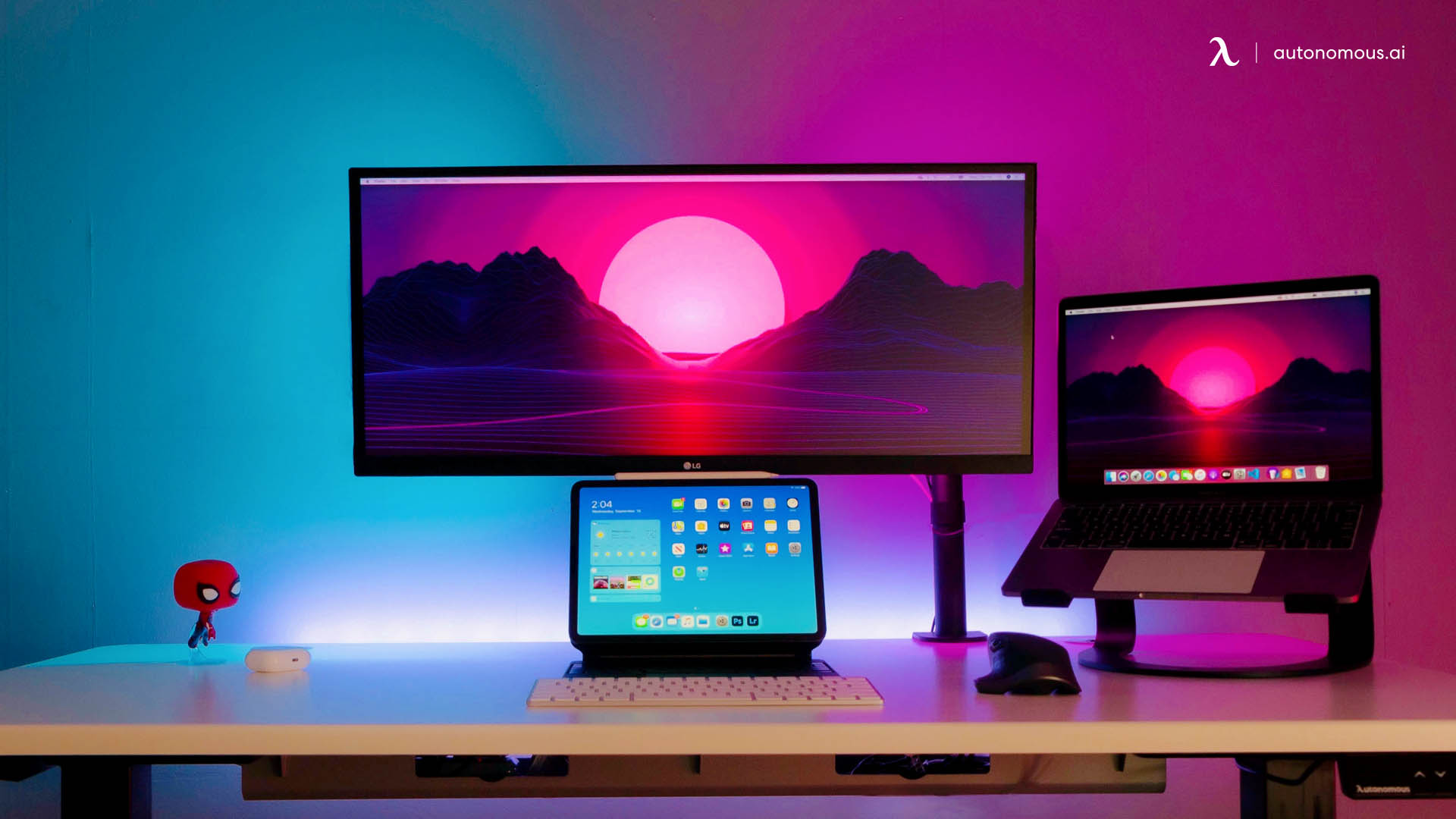
Healthy postures are an essential part of ergonomic design principles. The great thing about healthy postures is that no rule fits all, but each person has to find their own healthy and safe level. In short, a healthy posture is one where there is minimum to no strain on any part of the body. There are many aspects of achieving a healthy posture, and here are a few things to keep in mind.
- Place commonly used things in the primary work zone, where elbows are close to the body, shoulders are relaxed, and little to no reach is necessary.
- In the secondary work zone, locate fewer often used items: more reaching is necessary, with arms stretched out from the body.
- When going from a sitting to a standing position, adjust access as needed.
Above all, workstations must always be adequate in size. This can be a significant difficulty, especially in these days of high office space rental costs.
If the workstation is on the smaller side, take the time to look for and purchase equipment and furnishings that will fit in the space. If possible, have furniture customized to ensure suitable proportions, design, and sizes for office ergonomics. You can also purchase monitor arms for a multiple monitor setup, so your neck doesn't have to rotate side by side unnecessarily several times a minute.
Work Flexibility
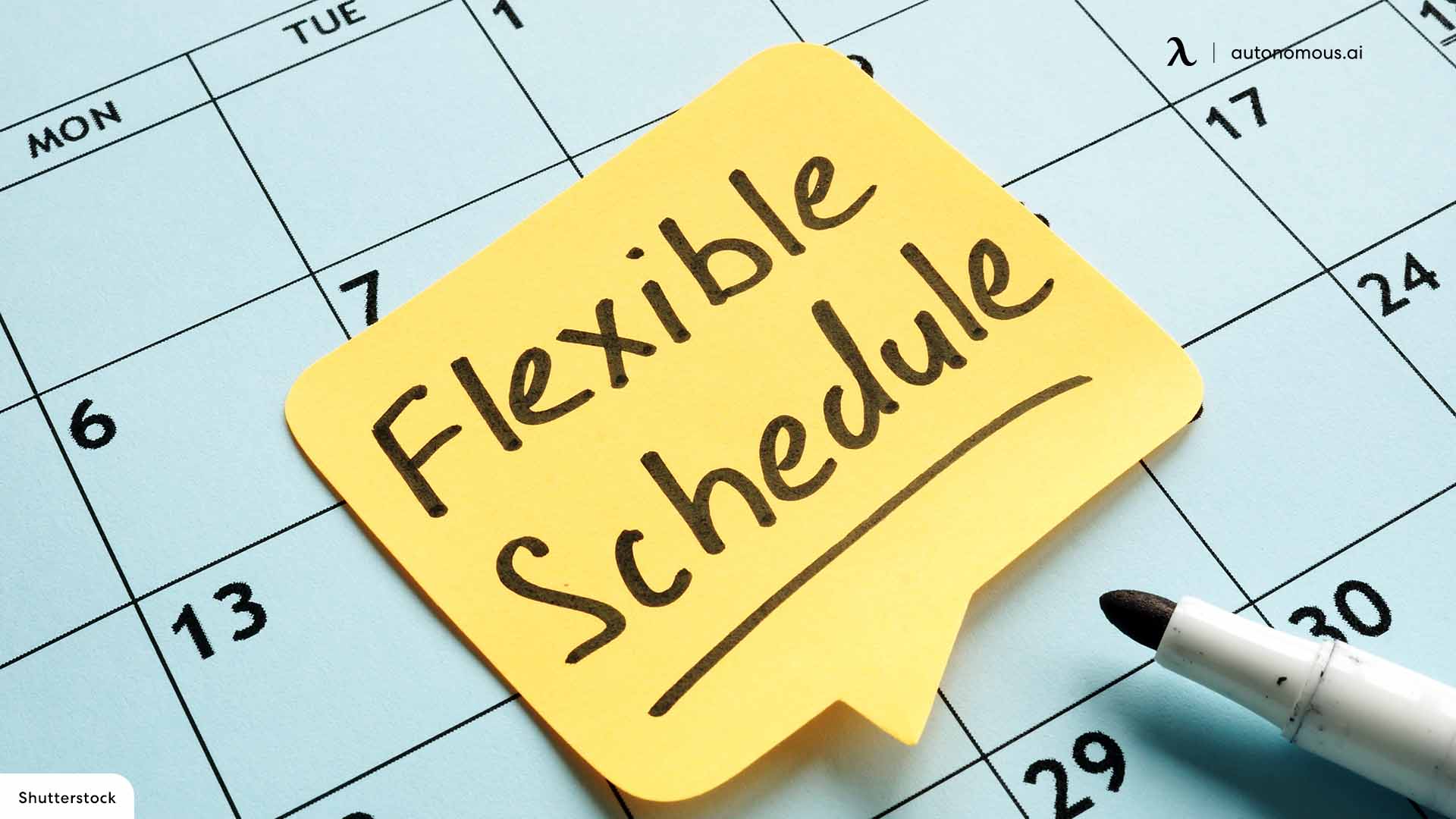
Here is another ergonomic design tip for you. Work flexibility has multiple steps. It covers physical flexibility as well as mental flexibility. Organizations transitioning towards modern methods of working are adapting ways that offer improved flexibility to the employees. This means that employees have better control over their work.
This could range anything from control over the work hours to deciding the time for a break. Control over setting up their workstation or even speaking about the physical or mental challenges they face every day. Hence, workplace ergonomics isn't about physical factors but about improving the experience in general.
Safety
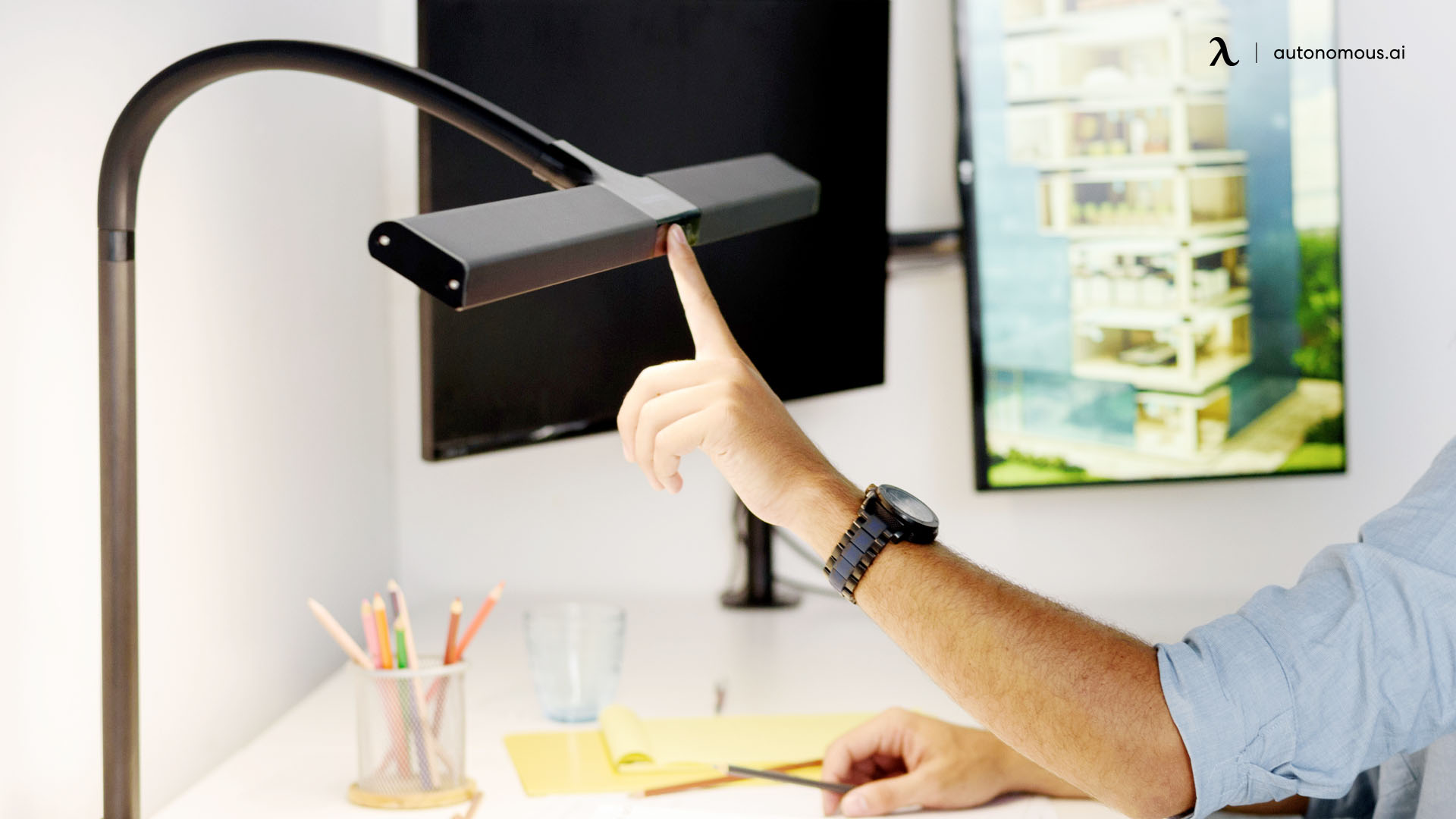
Safety is not just the protective gear or a cushioned seat for your back muscles to prevent from aching. Safety in the workplace combines multiple practices that help you keep the body and mind relaxed. It is a must-have part in the ergonomic design tip for you. For example, if you work on a desktop, it is important to ensure safety for your eyes. According to an American Optometric Association (AOA) survey, the average American worker spends up to seven hours each day looking at a computer screen, whether at home or work.
There are many ways to reduce and fight back the stress on the eyes. Invest in a desk lamp, for starters, so your eyes don't have to focus in the dark. You can also practice other exercises which give a rest to your eyes.
A simple way is to look at anything 20 feet away for 20 seconds every 20 minutes, to lessen eye strain and help you avoid it. When you shift your focus to a distant object, your close focus muscles have a chance to relax.
Moreover, you can also use gadgets like a flow board or anti-fatigue mat to prevent lower back injuries. Finally, purchasing something as simple as a desk pad is important to prevent your arms and wrists from straining.
Stay connected with us!
Subscribe to our weekly updates to stay in the loop about our latest innovations and community news!
Spread the word



/https://storage.googleapis.com/s3-autonomous-upgrade-3/production/ecm/230914/bulk-order-sep-2023-720x1200-CTA-min.jpg)

/https://storage.googleapis.com/s3-autonomous-upgrade-3/static/upload/images/new_post_author/admin-1.png)